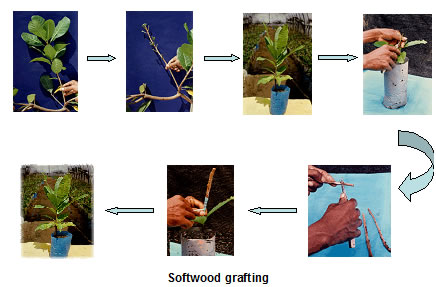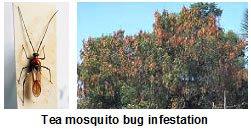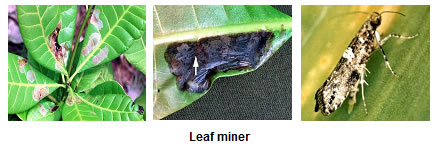| Tamil Nadu Varieties | : | VRI-1,VRI-2,VRI-3,VRI-4 , VRI (CW) H1 | |
| Kerala Varieties | : | ||
| K-22-1,Kanaka ,Madakkathara -1 ,Madakkathara-2,Priyanka ,Sulabha , Mrudula, Poornima, Sree, KAU Nihara | |||
| Andhra Pradesh Varieties | : | BPP-1,BPP-2,BPP-3,BPP-4,BPP-5,BPP-6,BPP-8, BPP -10,BPP -11 | |
| Karnataka Varieties | : | Chintamani-1, Chintamani-2 NRCC-1,NRCC-2,Ullal-1,Ullal-2,Ullal-3,Ullal-4,UN-50, H-130, Bhaskara , Nethra Vaman | |
| Maharastra | : | Vengurla-1,Vengurla-2,Vengurla-3,Vengurla-4,Vengurla-5,Vengurla-6,Vengurla-7 , Vengurla-8 | |
| Goa | : | Goa-1 , Goa 2 | |
| Orissa | : | Bhubaneswar-1, Jagannath , Balabhadra , | |
| West Bengal | : | Jhargram-1, Jhargram-2 |
Soil –
Climate –
June – December.
The cashew seeds should be soaked in water for 12-24 hours before sowing and the floats are removed those which sink to the bottom should be used for planting.

| Manures and fertilizers | I year old | II year old | III year old | IV year old | V year onwards |
| FYM or compost (kg) | 10 | 20 | 20 | 30 | 50 |
| N (g) | 70 | 140 | 210 | 280 | 500 |
| P (g) | 40 | 80 | 120 | 160 | 200 |
| K (g) | 60 | 120 | 180 | 240 | 300 |
Plough the interspaces after the receipt of rain and raise either groundnut or pulses or minor millets till the trees reach bearing age.
1.Stem borer

1. Collection and destruction of affected shoots
2. Swabbing the bark of exposed roots and shoots with Carbaryl 50 WP 2 g/lit. or swabbing with a suspension of Carbaryl 50 WP (4 g/lit) can be done up to one meter length in the exposed trunk region after shaving the bark
3.Remove grubs from early stage infested trees and drench the damage portion with Chlorpyriphos 0.2% @ 10 ml/lit or Neem Oil 5%.
2.Tea mosquito bug

Management-
Spray application of phosalone 35 EC@ 2.0 ml, followed by carbaryl 50WP @ 2g/l at vegetative flush stage, panicle initiation stage and nut formation stage respectively are recommended for the management of tea mosquito bug.
Spray schedule involving three rounds of spray viz., first spraying with Profenophos (0.05%) at flushing stage, second spraying with Chlorpyriphos (0.05%) at flowering and third spraying with Carbaryl (0.1%) at fruit set stage is most effective.
3.Shoot caterpillars

Management-
Shoot caterpillar can be controlled by spraying Profemophos 50 EC @ 2 ml/lit.
4.Root borer
Management-
5.Leaf miner

Management-
1. Collect and destroy the damaged plant parts
2. Spray NSKE 5% two rounds, first at new flush formation, second at flower formation
1.Potassium
|
| Deficiency Symptoms |
Marginal chlorosis occur in older leaves; severe symptoms will leads to the whole leaf become brown in color |
| Correction Measure |
Foliar spray of KCl@1% |
2.Iron
|
| Deficiency Symptoms |
Chlorosis occur in young leaves; young leaves seem to complete pale yellow in color |
| Correction Measure |
Foliar spray of FeSO4@0.5% |
3.Zinc
|
| Deficiency Symptoms |
Symptoms will appear in young leaves; Occurence of chlorosis in leaves; younger leaves become small |
| Correction Measure |
Foliar spray of ZnSO4@0.5% |
Cashew Processing
1.Die back or Pink disease
Management-
2.Anthracnose
Management-
1. Remove the affected portions of plant/branches
2. Spray 1 % of Bordeaux mixture + Ferrous sulphate at the time of flush initiation
3 – 4 kg / tree / year.
Growing Districts Cuddalore, Ariyalur, Pudukottai, Tirunelveli, Villupuram, Theni
Major markets in Tamil Nadu Jayankondam, Vridhachalam, Panruti
Grade specification White/ Pieces, splits, butts, 320,240,180
